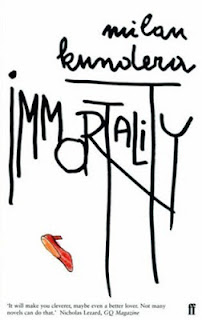I've written a lot about the extremely high quality of 2010 rieslings from Germany's Mosel valley. With their fresh fruit flavors, intense minerality and razor-sharp acid, the wines offer tons of pleasure now, while the best will evolve for decades. And when an expert winemaker like Reinhard Löwenstein of Weingut Heymann-Löwenstein gets his hands on some 2010 grapes, the result is a perfect storm of riesling.
Specifically, I'm praising the 2010 Weingut Heymann-Löwenstein Riesling "von blauem Shiefer Reserve." These riesling grapes are grown on some of the tallest and steepest slopes in the Mosel Valley, near the town of Koblenz. The vines here are forced to dig deep into the blue slate soils to survive, hence the "von blauen Schiefer" designation, which means "from blue slate." The grapes in this wine were harvested at high levels of ripeness (auslese levels for the wine nerds who are wondering) but this wine is fermented bone dry to 13% alcohol. The "reserve" designation was only tacked on to the 2010 vintage, another demonstration of this vintage's unique place in the world of of Mosel riesling. The result is one of the most stunning examples of 2010 Mosel riesling I've tasted so far.
 |
| This wine went perfectly with a pork schnitzel and a riesling mustard sauce. |
The acid hits the palate right away, and sticks around through the finish. The acid is lip-smackingly high, but I have to admit: I friggin' love it. Crazy-good flavors of rich white peach, Granny Smith apple, lime zest, margarita salt, tangerine rind... the flavors go on and on. The level of freshness is absurd. This riesling shows rich fruit but it's laced with tons of acid and minerals for balance. Hints of chestnut on the long finish.
Basically, it's a classic riesling. No joke, for me this is a 95 point riesling. It's one of the best wines I've had all year, without a doubt. I'm going to try and age several bottles of this wine because it will improve for 10, 20 maybe even 30 years. But it's so delicious, I'm not sure if it stands a chance of being left undisturbed for long.
Basically, it's a classic riesling. No joke, for me this is a 95 point riesling. It's one of the best wines I've had all year, without a doubt. I'm going to try and age several bottles of this wine because it will improve for 10, 20 maybe even 30 years. But it's so delicious, I'm not sure if it stands a chance of being left undisturbed for long.
"This wine is blowing my mind AGAIN," says the Wineberserkers.com forum member, "and I'm wondering if it's just exploiting a genetic predisposition in my makeup, or if it's as utterly bad-assed as I think it is."
It's not just him. This wine is indeed bad-assed. And for $28 from Weygandt Wines in DC, it's also the deal of the year. It's so good, I had to make sure I bought some more before I wrote about it.
This riesling inspired me to cook up some German-esque food to go with it. I had a few pork chops that I pounded until they were flat and thin. I was feeling creative and adventurous so I crushed up a bunch of fortune cookies and mixed in bread crumbs, salt, pepper and Tony Chachere's seasoning for the breading. I dipped the meat into an egg wash, then into the breading mixture and sauteed them in a pan of olive oil. When the "schnitzels" were done, I opened up a jar of riesling mustard I got in the Mosel Valley last year and spread some on top. This recipe might sound quite bizarre, but it actually turned out to be delicious. The fortune cookies added a bit of sweetness to the schnitzel while the riesling mustard gave it great bite and tang. When paired with this riesling, it was nothing short of beautiful.
Prost!
This riesling inspired me to cook up some German-esque food to go with it. I had a few pork chops that I pounded until they were flat and thin. I was feeling creative and adventurous so I crushed up a bunch of fortune cookies and mixed in bread crumbs, salt, pepper and Tony Chachere's seasoning for the breading. I dipped the meat into an egg wash, then into the breading mixture and sauteed them in a pan of olive oil. When the "schnitzels" were done, I opened up a jar of riesling mustard I got in the Mosel Valley last year and spread some on top. This recipe might sound quite bizarre, but it actually turned out to be delicious. The fortune cookies added a bit of sweetness to the schnitzel while the riesling mustard gave it great bite and tang. When paired with this riesling, it was nothing short of beautiful.
Prost!









